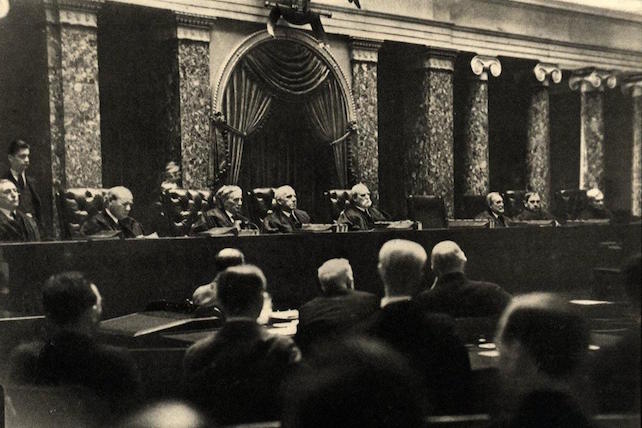Nonetheless, Brandeis’ appointment set in place a tradition of an identifiable “Jewish seat” on the Supreme Court, filled with such men as Benjamin Cardozo, whose tenure briefly overlapped with Brandeis and the third Jewish justice, Felix Frankfurter, appointed in 1939. This lasted until the end of the 1960s, when the Jewish Abe Fortas was forced to resign over an ethics scandal. He was replaced by a Methodist, Harry Blackmun, but only after two failed attempts by Richard Nixon to appoint committed segregationists to the court.
There would be no Jew on the Supreme Court after 1969 until 1993, when President Clinton appointed Ruth Bader Ginsburg.
Lack of religious diversity
The idea of an identifiable “Jewish seat” and likewise a lone “Catholic seat” – filled by the likes of Justices Pierce Butler, Frank Murphy and finally William Brennan – reflected the degree of social acceptance that both Catholics and Jews had attained. But it also highlighted a near total lack of recognition of other faith traditions – no Muslim, Hindu or self-acknowledging atheist has ever sat on the highest court of the land, although Cardozo was an avowed agnostic.
It also reflected the then-widespread understanding of religious identity as being based primarily on an affiliation with a particular religious denomination.
Rise of the religious right
This changed at the end of the 1970s amid a wider movement within religion and politics.
Longstanding antagonisms within each faith tradition – between fundamentalists and modernizers – were now reformed to pit religious conservatives of different denominations against liberals. This led to the mobilization of a political alliance first forged between evangelical Protestants and conservative Catholics, but which over time widened to include Mormons, Orthodox Jews and members of the Eastern Orthodox Church. This alliance came to be known as the religious right.
The emergence and growing strength of the religious right, which sees removal of religion from the public square as an assault on faith, has had huge ramifications for the Supreme Court.
It led to a vigorous campaign to replace perceived liberals in the judiciary with judges who share the theological vision of the religious right.
This has brought about what I see as a second era of the Supreme Court’s religious composition. Organizations such as the Federalist Society, a conservative legal group founded in 1982, and the American Center for Law and Justice, founded by televangelist Pat Robertson, have had increasing success in lobbying for the appointment of religiously conservative judges.
It has seemingly made little difference what the religious denomination of a justice is. What is important is their views about religion and the state. As Rod Dreher, a leading light of the Christian right, recently put it: “The best Christians can hope for is that judges and lawmakers will make it possible for us to live our lives fully as Christians, even in the public square.”
This, more than anything, explains the staunch evangelical support for the numerous conservative Catholics who have been appointed since 1986: Antonin Scalia, Kennedy, Clarence Thomas, John Roberts, Samuel Alito and Brett Kavanaugh, not to mention Neil Gorsuch, who was raised Catholic but now attends an Episcopalian church.

